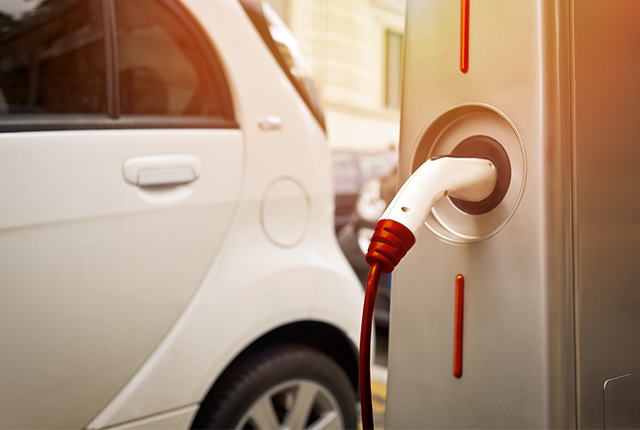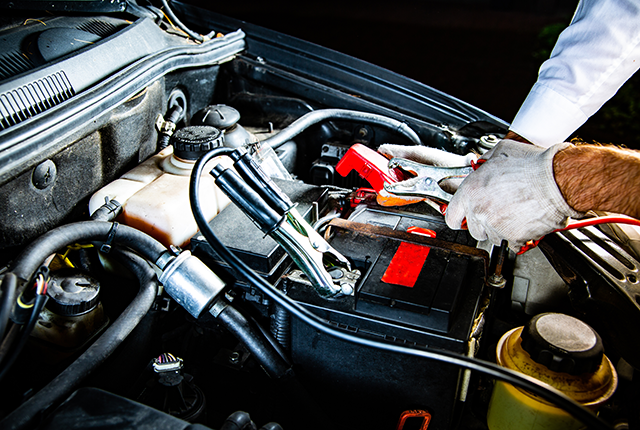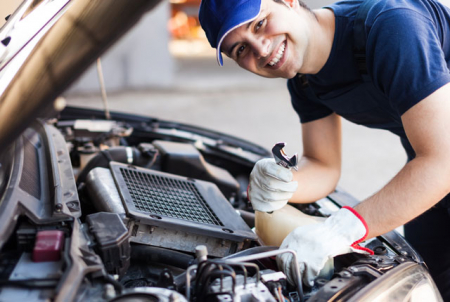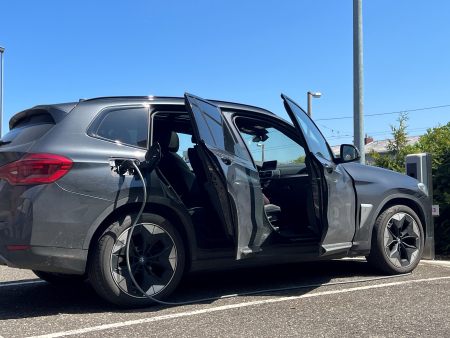EVERYTHING ABOUT THE 12V BATTERY IN THE E-CAR
EXPLAINED QUICKLY AND SIMPLY
Get into e-mobility and just drive off - sounds easy, but often it is not.
What do you need to know about the 12V starter and on-board battery?
The Banner experts have briefly noted down a lot that is worth knowing.

1. Charging
The following generally applies to battery charging:
The vehicle electronics, i.e. the battery management system, decides in the electric car when the charge controller recharges the 12V on-board battery with energy from the high-voltage battery - via a DC/DC voltage converter. Regardless of whether during the journey or when charging the high-voltage battery. This sometimes led to undervoltages and problems with the stability of the vehicle electrical system.
Good to know! Depending on the electric car manufacturer, the 12V starter and on-board power supply battery is always charged during the charging process of the high-voltage battery - i.e. regardless of the state of charge (SOC) - or only when the high-voltage battery is approx. 80% charged. A look at the operating instructions for the respective electric car can be really helpful here. Many electric car manufacturers recommend that the state of charge of the high-voltage battery (lithium-ion traction battery) should ideally always be between approx. 20-80%, not 100% fully charged.
Result: In some electric cars, the 12V on-board battery is of course permanently partially or deeply discharged with all the known negative effects! Following various software updates, more and more e-car manufacturers are now recharging the on-board battery via the high-voltage battery even when the e-car is switched off.
PS: Please note - even an upgrade in battery technology from conventional wet batteries to EFB or AGM batteries does not change the basic problem of insufficient recharging.

2. Jump starting. Do not jump-start an electric car!
For technical reasons, the jump-start points of electric cars, if any, are not designed to jump-start other vehicles. In this case, it is better to seek the help of a breakdown service. Conversely, however, an internal combustion engine may properly jump-start an electric car.
In the "HOW-TO article on jump starting" we show you what you should pay attention to when jump starting a car.
3. Jump-starting - simply push the car.
Do NOT push electric cars! (BEV Battery Electric Vehicle) This cannot work, there is no mechanical clutch! Please also note: The high-voltage system cannot be activated by pushing the car.

4. Battery change
Everything important is noted in the "Basic article on e-mobility". Depending on the e-car manufacturer, the on-board battery must be replaced every 2-3 years during the annual service. It is THE safety-relevant component. Assuming that at night on the motorway at speed 130 the high-voltage system would be switched off for safety reasons, the back-up battery must continue to reliably supply the vehicle lighting with energy, for example! At the latest when the error message "Check ELEC system" (=check electrical/electronic system) appears on the on-board computer display, often in combination with the red battery warning light, it is high time to think about replacing the back-up battery.
When replacing the battery without an external power supply, please note: Due to the brief absence of the 12 V on-board battery and the resulting voltage interruption, the on-board computer of some e-car models loses the values of the trip meters A and B and thus also everything related to them, in particular the current average consumption and the amount of energy consumed since the last reset. You should make a note of these values beforehand if you need them. After the battery replacement, the on-board computer is reset and starts again to determine the average consumption and to individualise the range forecast.

5. Briefly about the open day
The following situation is not at all uncommon: When charging the Li-Ion drive battery, the car doors remain open, various 12V auxiliary consumers such as the interior lighting are switched on, then depending on the make and model of the car the 12V on-board battery can discharge before the Li-Ion drive battery is fully charged. Result? The charging plug can no longer be disconnected!
Banner tip: This function is controlled via the vehicle electrical system, which, as the name suggests, is also connected to the vehicle electrical system battery.
Another Banner tip: Take the electric or hybrid car to the workshop for service or repair, then please leave at least one side window open in the workshop. Even better: leave a door propped open so that you can get back into the electric car if necessary. Why? Depending on the repair, the 12V starter and on-board battery could be disconnected. If this happens without external voltage maintenance, the doors could remain locked, depending on the car model! In the worst case, the workshop visit will now take a little longer than planned.
This information also applies to DIY (do it yourself) service and repair work.
Otherwise, the general rule is: Hands off high-voltage components and cables (recognisable by their orange colour)! This is reserved for automotive specialists with the appropriate equipment and additional qualifications (HV high-voltage training). No matter whether it is non-electrotechnical, electrotechnical work or electrotechnical work under voltage (often with nominal voltages of 288 to over 800V)!
More articles on this topic

